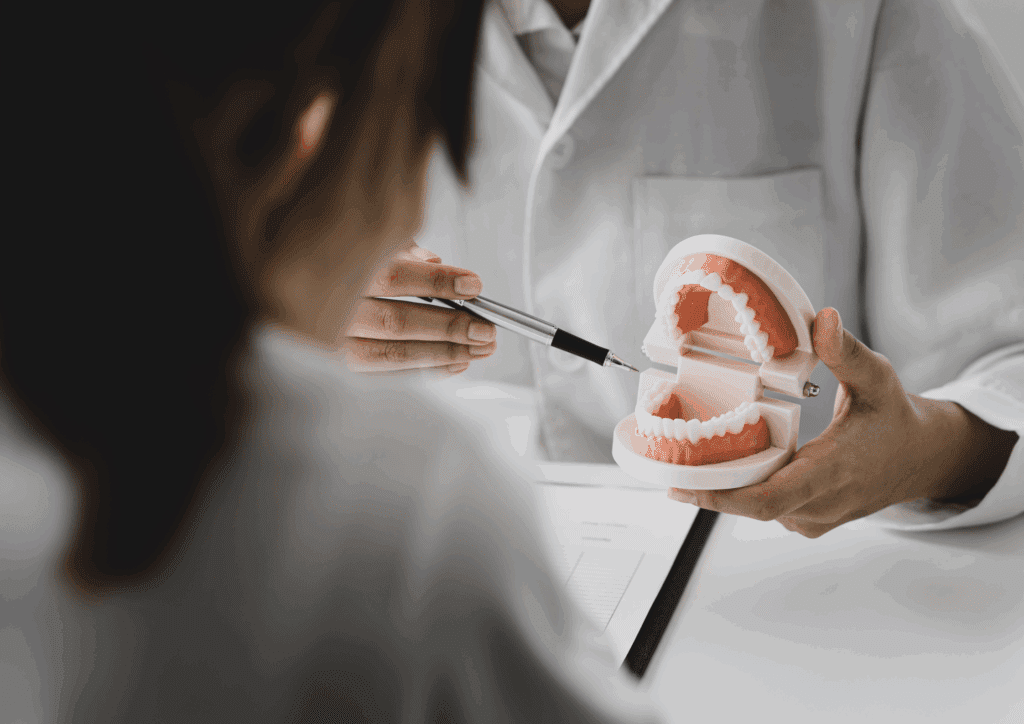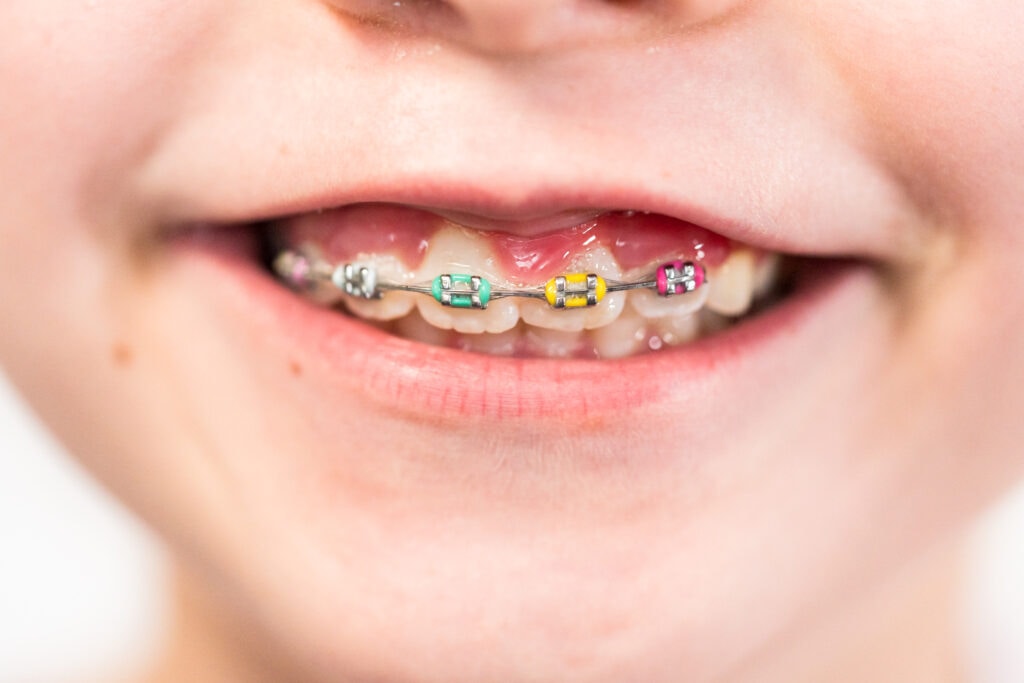Gappy smiles may look adorable on children, but for adults, those gaps between teeth may not always hold the same appeal. While these gaps may not necessarily affect your oral health, their impact on aesthetics is a different matter altogether. If you find yourself seeking solutions to filling gaps in your teeth for an improved smile, you’ve come to the right place. In this blog, we will explore various treatment options for addressing gaps between teeth and provide valuable insights to help you choose the most suitable one for your needs. Whether you’re looking into orthodontic treatments, dental bonding, or veneers, we’re here with detailed information to help guide you towards making an informed decision.
What are the Causes of Gaps Between Teeth?
The medical terminology for gaps between teeth is known as diastema. These gaps can occur anywhere on your teeth but are common in the upper front teeth. Diastema can vary in size, ranging from small, barely noticeable spaces to larger, more prominent gaps. It can be a temporary condition during childhood, as the baby’s teeth fall out and are replaced by permanent teeth. However, in some cases, diastema may persist into adulthood.
Some of the causes of gapped teeth include:
Frenum Position
The frenum or more commonly known as lip tie is a tissue fold that connects the upper lip to the upper gum. When the frenulum sits lower than usual, it can exert a pulling force on the gum tissue, causing the two front teeth to be pushed apart. This constant tension from the frenulum can prevent the teeth from naturally coming together and closing the gap, ultimately contributing to the development of tooth gaps or diastema between the front teeth.
Dental Growth
Gaps between the front teeth can be a natural part of development. There may be gaps between baby teeth to make space for the larger adult teeth that have yet to erupt. These gaps typically close when all the adult teeth eventually come out, and the empty spaces are filled.
Missing Teeth
Some people are born with missing baby or adult teeth. These teeth may never develop and this generally occurs due to genetic predisposition. Other reasons for missing teeth are dental trauma, wear or damage. The space left by missing teeth can cause the adjacent teeth to shift and leave gaps.
Extra or Small Teeth
Extra teeth in the jawbone can obstruct the normal eruption of other teeth, causing gaps. Gapped teeth also occur when there is a difference in the size of the teeth and the jawbone. If the teeth are smaller than the available space in the jaw, gaps may form.
Jawbone and Tooth Alignment
If the jawbone is too large compared to the size of the teeth or the teeth are not aligned well within the jaw, gaps may develop.
Genetics
In some cases, gaps between the teeth can be inherited. Genetic factors can influence the size and shape of teeth and jawbone development.
Habits and behaviours
Certain oral habits and behaviours like thumb sucking or using a pacifier for an extended period can affect tooth and jaw alignment, which can cause gapped teeth.
Gum disease
Gum disease can cause gum inflammation and loose teeth, which may lead to changes in the position and alignment of the remaining teeth, potentially causing gaps. Since gum disease is mostly painless, the disease can progress without you being aware of it, so it’s vital to get regular dental checkups to maintain your oral health.
Is it Necessary to Fill the Gaps Between the Teeth?
Gaps between teeth may close naturally for younger children as their adult teeth erupt through. Some gaps may increase due to the presence of lip ties. Filling in gaps between the teeth is not necessarily required for everyone. The decision depends on various factors, including personal preferences and dental health considerations.
Some people may want to close the gaps between teeth for cosmetic reasons, while others may want to embrace their gaps for a more unique smile. If the gaps do not pose any functional or aesthetic concerns, you don’t need to fill them unless you want to. This is because diastema or small gaps are a natural variation and may not result in dental problems.
However, it’s best to consult your dentist to evaluate the gaps according to your dental condition and determine if they need to be treated, especially if you notice the gap widening with time.
Treatment Options for Closing Gaps Between Teeth
Whether the gaps between your teeth are a natural occurrence or because of wear or damage to your teeth, there are a range of dental procedures that can help treat them.
Some of the treatment options for closing gaps between teeth include:
Dental Veneers
Dental veneers are thin shells of porcelain or composite resin, which can be used to cover dental imperfections like cracks, chips and stains, as well as change the tooth size and shape to fill gaps. The procedure is quick and minimally invasive, and can help enhance your smile, masking flaws for a complete smile transformation.
At our Ballarat Clinic, we provide a DSD smile design which allows you to trial your smile before you begin treatment with 3D technology. This provides more predictable treatment outcomes, allowing you to codesign your smile with our dentists for results aligned with your smile goals.
Orthodontics
Orthodontic treatments, such as braces or clear aligners, are commonly used to close gaps between teeth. Braces use brackets and wires to gradually shift the teeth into their desired positions, closing the gaps in the process. Clear aligners offer a more discreet alternative, using a series of removable aligners to achieve the same goal. Orthodontic treatment may take longer than other options but can help address both small and large gaps while also correcting overall tooth alignment.
At Dana Street Dental, we also offer Inman Aligners, a single and removable device to align your front teeth. You can also choose from a range of braces options and Invisalign with treatment plans tailored to your specific requirements.
Dental Crowns & Bridges
Dental crowns and bridges are a common smile restoration procedure to close large gaps caused by missing teeth. A dental crown is a custom-made cap that covers a single tooth, while a dental bridge consists of multiple crowns joined together to replace missing teeth. By filling in the gaps, crowns and bridges not only enhance your smile’s appearance but also restore functionality and maintain the alignment of surrounding teeth.
Dental Implants
Dental implants are a long-lasting, fixed solution for replacing missing teeth and filling the resulting gaps. This procedure involves surgically placing a titanium implant into the jawbone, which provides a sturdy foundation for a prosthetic tooth (crown) to be attached. Implants not only provide a natural-looking solution for closing gaps but also stimulate the jawbone, helping maintain its structure.
Factors to Consider When Choosing a Treatment Option
Some of the key factors to consider before deciding on a treatment to close gaps between teeth include:
Gap Size and Location
The gap size and location play a significant role in determining the appropriate treatment. Smaller gaps may be effectively addressed with cosmetic options like dental veneers, while larger gaps caused by missing teeth may require restorative solutions such as dental implants or bridges.
Oral Health
Any underlying dental issues, such as tooth decay, gum disease, or misalignment, should be addressed before or alongside gap closure treatments. Ensuring a healthy foundation is essential for successful and long-lasting results.
Alignment and Bite
Misaligned teeth or jaws can lead to cavities, gum diseases and chewing difficulties. If your teeth, jaw or bite is misaligned, orthodontic treatment may be needed to close gaps and move the teeth into proper alignment to help achieve optimal functionality and improved appearance.
Long-Term Goals
Do you want to fill teeth gaps for cosmetic reasons, or do you want to improve functionality and oral health? Is there a reason for your gap increasing, or have you noticed changes in your oral health that may be a cause for concern? Understanding your priorities can help guide the treatment choice for achieving your desired goals.
Budget and Affordability
Consider your budget and insurance coverage to determine which treatment is financially feasible. Some dental offices may offer payment plans or financing options to make the desired treatment more affordable.
Time Commitment
Different treatments require varying lengths of time to achieve the desired results. Cosmetic options, such as dental veneers, may provide quick results, while orthodontic treatments or dental implant procedures are longer and more complex. You must have the dedication and commitment to follow through with the treatment to get successful results.
Professional Evaluation
Your dentist will perform a comprehensive evaluation, factoring in your oral health and dental requirements, and providing clarity on both functional and aesthetic elements for suitable treatment options. At Dana Street Dental, we understand that each smile is unique. As such, we provide bespoke recommendations based on your specific needs and preferences, aligning them with your lifestyle for lasting results.
Choose the Smile You Want with Dana Street Dental
There are no half-measures when it comes to your smile. Whether it’s a tiny gap which has been bothering you for some time or a more recent issue caused by dental trauma, our friendly dentists are here to help. With standalone cosmetic dental procedures for gaps of all sizes or a combination of treatments for a complete smile makeover, you can achieve the smile you want today. Call us for a consultation today.














